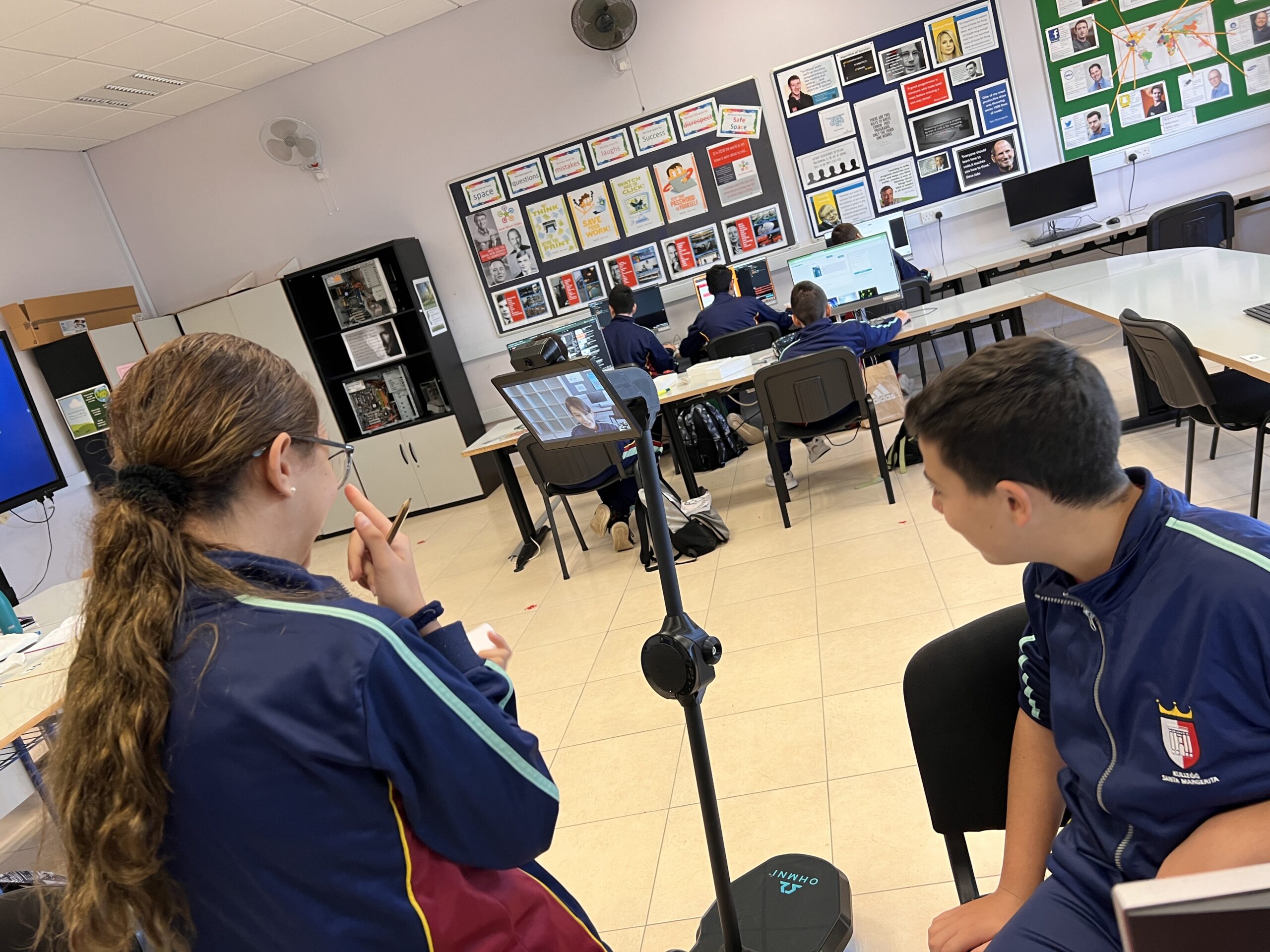TRinE Guide: Requirement for the use of Telepresence Robots in Secondary Schools
St Margaret College, Verdala being a Maltese secondary school receiving students between the ages of 13 and 16, it was felt that consultation within the school community was needed to help draw up a policy for use that would facilitate the smooth running of the use of this technology. To this end focus groups were held among both various levels of members of staff – including teachers, members of the administration and curriculum developers – as well as students, to discuss the design and implementation of a policy for use in secondary schools.
The results of these discussions are summarized in the policy drawn up here outlining:
- Scenarios for using TR
- Eligibility for use
- Consent and Data Protection considerations
- Personnel needed
- Training required
Scenarios for using TR
In the school a TR device may be used in the following settings:
- Members of the administration who may use TR to observe lessons, corridor supervision or to otherwise support their out-of-office duties.
- A teacher who is not physically available due to health issues.
- A student who is not physically available due to health issues.
- A visitor or a speaker who can’t physically come to school.
- A student who is not physically available due to travel or a nomadic family life.
The school considers the utility of TR on a case-by-case basis. In selected cases, TR may be assigned to some lessons and subjects.
Eligibility for Use and Using the TR
Qualification of an individual to have access to a TR device
1. Criteria for allocating a device to a student:
- A student is eligible to use TR if in long term absence due to certified physical or mental illness; is in quarantine; or is working remotely for a reason approved by school administration.
- Priority is given to remote students working remotely in hands-on/practical lessons.
- Where socialization is an area of concern, the device may be allocated to students to facilitate socializing e.g., in break time.
2. Criteria for allocating a device to an educator:
- An educator is eligible to use TR if in quarantine or working remotely for a reason approved by school administration.
- Priority is given to remote teachers who are interested in remote use of the device in the context of a hands-on/practical lessons.
3. The TR classroom:
- Specific roles need to be formally assigned (see below).
- The number of students in a TR class should not be larger than 15.
- The physical space should allow for the maneuvering of the TR device.
- The school needs a room where they can be left to charge unattended.
Consent, Data Protection and Rules of Use
1. Formal consent should be obtained from the parents/guardians of all students on both sides of the TR experience. The consent document should cover the learning environment for all eventualities and be clear on behavioural expectations and consequences so as not put undue responsibilities on educators, leaving them able to focus on their teaching.
2. All users (and, where relevant, guardians/parents) should be expected to sign an agreement stipulating that:
a.) Users will not record anything via their TR device or other recording mechanism at the remote location.
b.) Users will be responsible for the device in so far as they can control it remotely.
3. Educators responsible for assisting the person connecting remotely are to be always present with the TR device. (See below for details)
4. Students in class are to be aware that they are responsible for any damage they cause to the TR device due to negligence or willful vandalism. Their guardians/parents should also be formally informed accordingly even though the child is not themselves using the device.
5. Clear consequences need to be published and adhered to in case of infringement of the above points. These should include financial retribution and a student being disallowed from further use of a TR device upon their first willful infringement.
Personnel needed
1. There needs to be a person whose role formally includes:
- Charging the TR device/s
- Storing the TR device/s
- Taking booking of TR device/s
- Seeing the device/s are picked and returned as per bookings
- TR device/s maintenance and attendance to error reports
This person needs to be sufficiently tech-savvy to handle basic issues with the device and needs to be available during lesson time so that in case of issues the lesson does not get disrupted.
2. There need to be professionals available to prepare for and ongoingly deal with any psychological impact of students exposed to the reality of seeing a classmate in ill health.
3. The person joining the class through the TR device, needs to have a class counterpart (which in the case of a student would be a Learning Support Assistant) to help with the physical manipulation of space (e.g., pressing lift buttons, opening doors etc)
Training required
- There needs to be personnel responsible for training of students and family members in the use of the TR device including:
- Installation of TR software
- Device maneuvering
- Basic TR device etiquette
- Basic problem-solving
- There needs to also be personnel responsible for training of members of staff involved in all the above.
- Members of staff involved will also need information/training in:
- Methodology tweaks to improve learning via TR
- Voice projection in a TR reality (this may also necessitate the buying of microphones for class educators)
- Training on possible psychological impact on students of exposure to new realities (e.g. the reality of a visibly sick classmate)
- Students in class with a TR-device need to be trained on:
- Basic device care
- Basic etiquette when someone joins their class remotely via the device.

You want to learn more? Browse through our TRinE Teaching Scenarios and TRinE Stories and get more ideas on how a TR can be used in specific situations.
